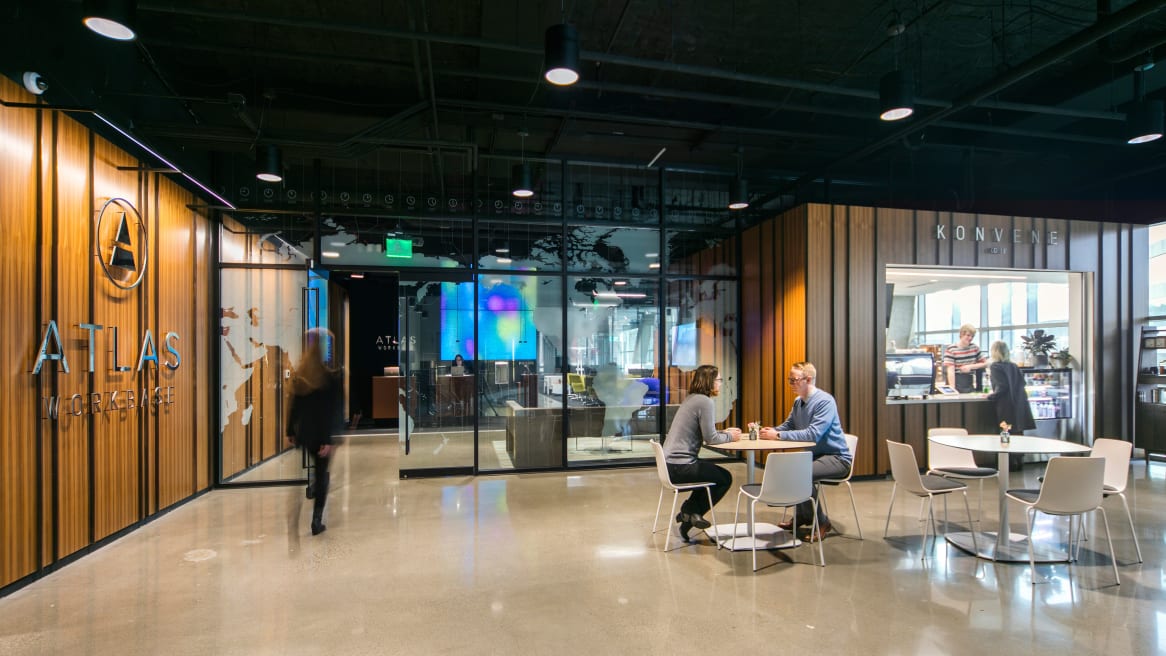Coworking Redefined
Atlas Workbase offers a diverse ecosystem where professionals can (really) get work done.
Coworking spaces are hot. There are over 7,000 around the world, and the number keeps growing. Also called shared workspaces, these work environments have proliferated along with the growth of mobile work. They act as outside offices, or even as the primary office, for workers in practically every industry.
But as some aspects of knowledge work become increasingly automated, business professionals are being asked to be more creative, more collaborative, and help spur innovation and growth, and that takes more than just a walk-up desk and good coffee. Workers need coworking places that support individual focused work, shoulder-to-shoulder dyadic work, collaboration that generates new ideas, as well as places to relax and rejuvenate.
Atlas Workbase is built to meet these needs. Located in downtown Seattle, the 20,000 square-foot facility, designed by Gensler, features a diverse ecosystem of spaces that gives people great choice and control over where and how they work.
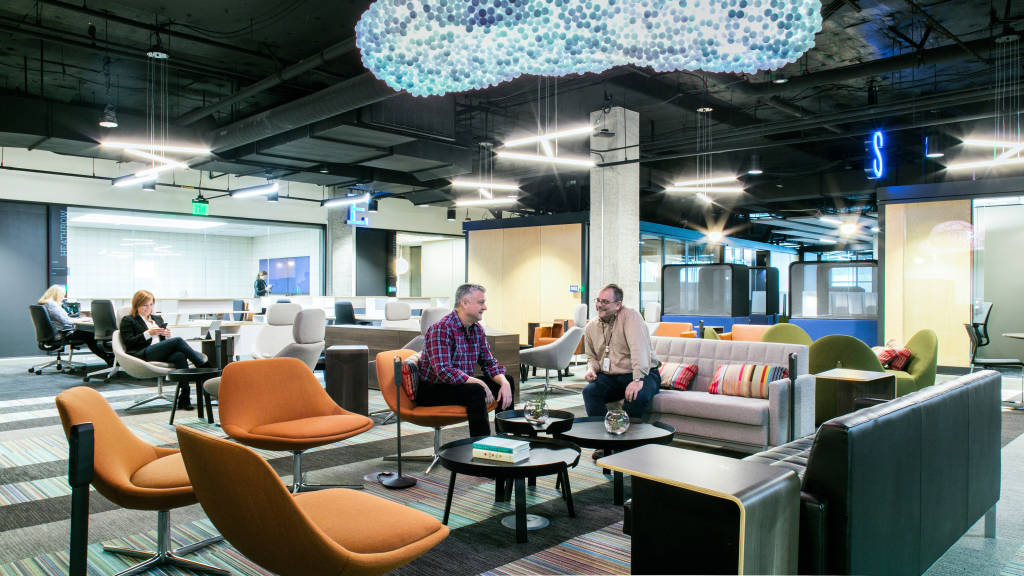
FOCUS
Early coworking spaces were essentially open, offsite locations for tech workers used to loud, start-up environments, places where you could “forget privacy,” as The Wall Street Journal put it.
Atlas recognized people’s need for focus and concentration and addressed it in the development of their work environments. All major interior walls and conference rooms are formed with V.I.A., movable intelligent architectural walls that not only provide true acoustical privacy, but also host technology. V.I.A. creates private, confidential workspaces while giving Atlas the flexibility to reconfigure interior spaces without costly, disruptive construction.
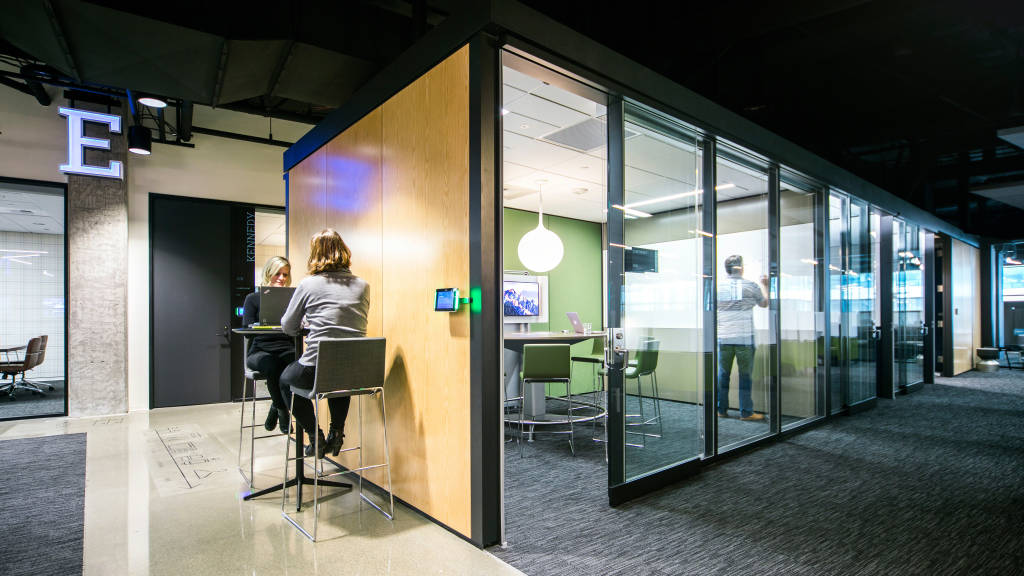
Andrew Dombrowski, an Atlas user, enjoys the quiet. “It’s very easy to come here and concentrate. And there are numerous, very innovative spaces to work in that allow you to feel different degrees of either isolation or preferred place. Like you’re in a different space entirely.”
Atlas CEO Bill Sechter says V.I.A.’s architectural, acoustic and aesthetic performance “has proven to be a key differentiator in what we’re offering our members. The environment that they’re working in is a representation of their brand, so the space makes a difference for them, and for us, in the marketplace.”
People can also choose to work in Brody WorkLounges for focus work. Similar to an enclave, these popular semi-private destinations provide adjustable ergonomic support and integrated power and lighting, but are open enough to allow users to keep in touch with the vibe of the overall environment.
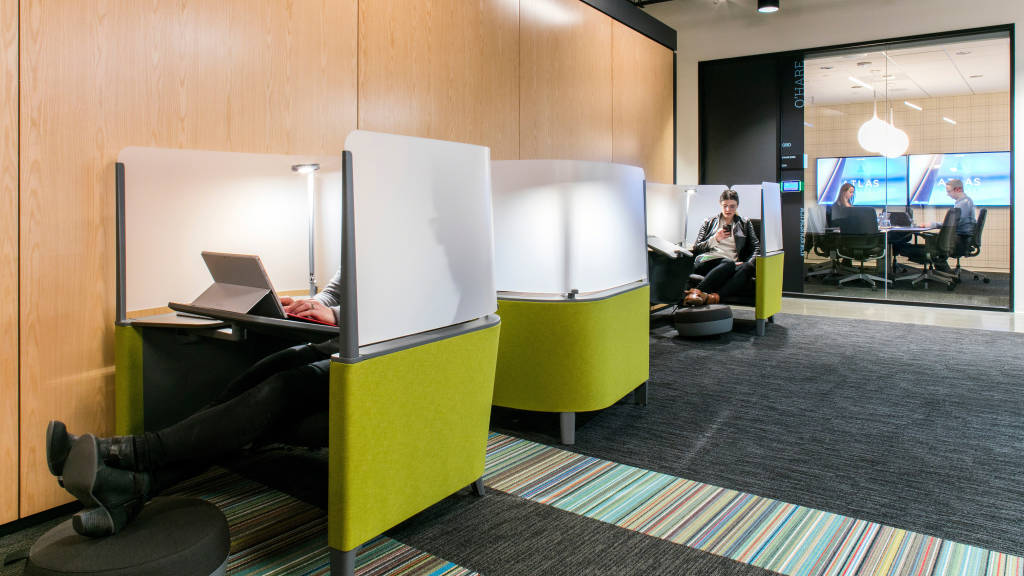
“The functionality of the Brody, the feeling of the comfortable seats, the lighting, privacy, you can put your feet up, have a place for your laptop and phone. They’re just a great place to work,” says Chief Real Estate Officer & Co-Founder Alan Winningham.
CREATE & COLLABORATE
Since work is so often project-based, places to easily connect and collaborate are also prized. Atlas has enclosed rooms for team meeting and brainstorming, as well as open spaces for impromptu discussions. “Access to folks that are launching new ideas, becoming entrepreneurs, or serial entrepreneurs, it’s important to be within those circles and have access to have conversations with those folks,” says Atlas user Nick Jordan.
Creative work can be solo or collaborative, and having workspace options to fit each kind of work is key, says writer Anna Minard. “Here I can go from from individual writing or other creative work by myself, to working with someone across from me, to a group of six or seven people, with stuff on the wall, and we can go through an editing process in a shared way. And then break out again for relatively private work.
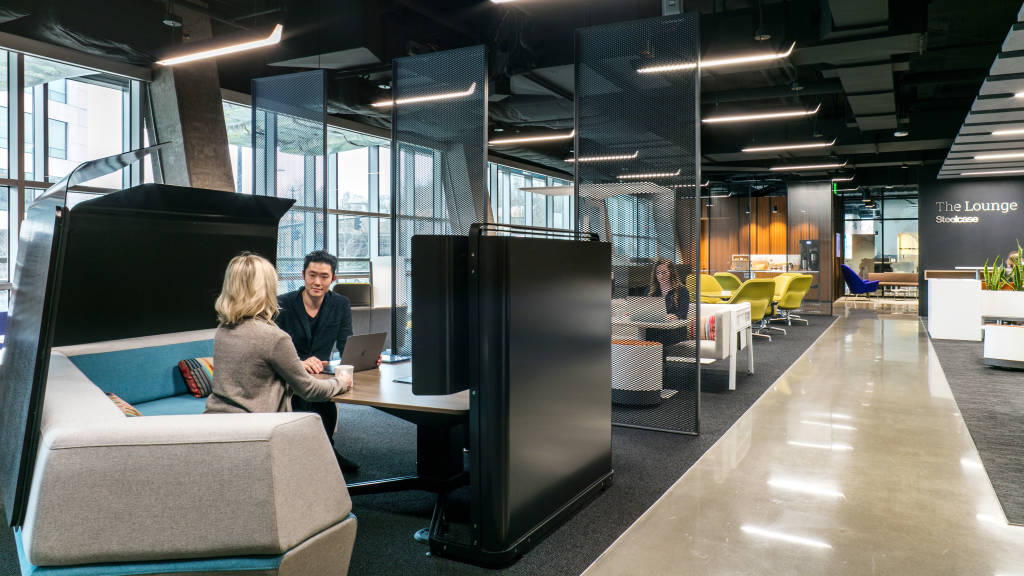
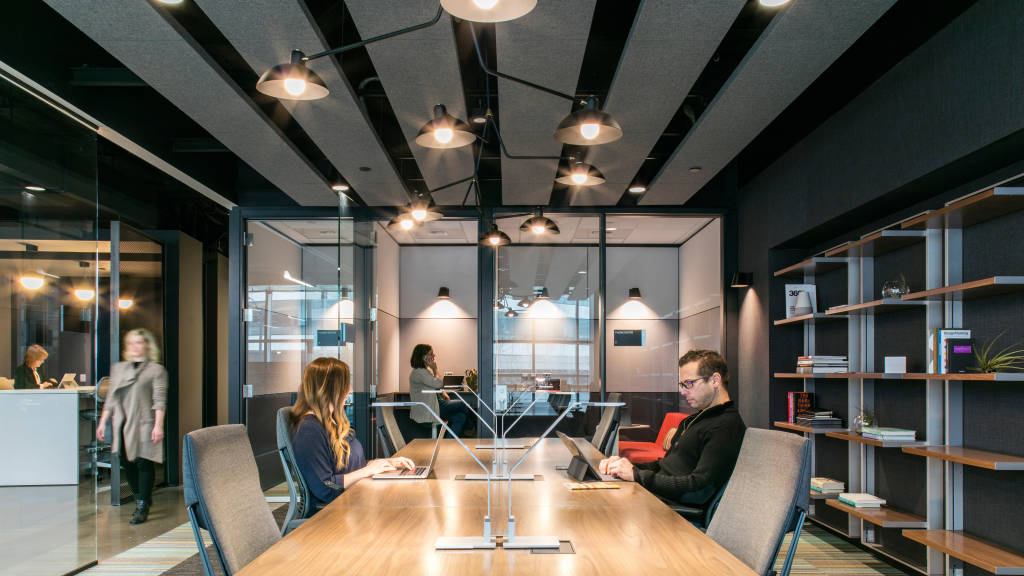
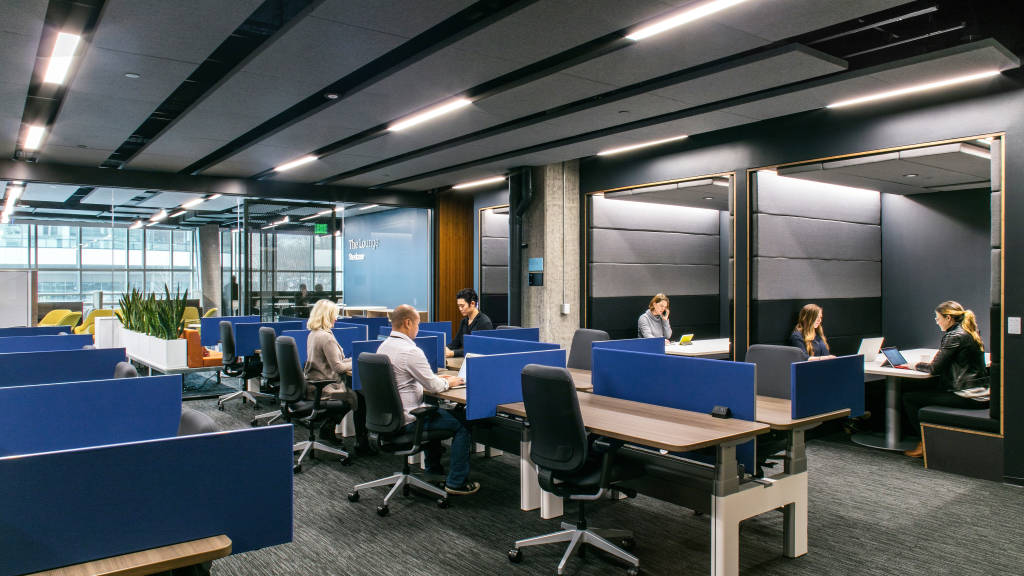
“This is a great place for someone doing creative work, because the work can be really different from day to day, and I have the flexibility to choose where I need to work.”
The Lounge here is a kind of third place: a casual, open seating area requiring no reservation, based on the concept of an airport lounge.
Spaces like this are often power deserts. Not at Atlas. There’s power throughout the open and lounge areas here, provided by Thread, a power distribution solution that lays underneath carpet and brings power to furniture and users without affecting foot traffic.
REJUVENATE
Atlas users can rest and rejuvenate in various places, from the Lounge to an enclosed office. There are workspaces that support work while sitting, standing, or reclining. Concierge and IT services give users a respite from many routine business problems.
Atlas’s broad ecosystem of workspaces designed for a range of work needs and workstyles clearly resonates with users (see What’s It Like To Work At Atlas Workbase?).
“I’ve never had a more productive work day in my life.”
“From the start, the objective was a place designed more for ‘grown up’ companies, different than a place for new start-ups,” says Gensler’s Covarrubias. “This is a place to conduct business.”
“Every day,” says Winningham, “literally every day, I have someone tell me some variation of, ‘I’ve never had a more productive work day in my life.’
What’s it like to work at Atlas Workbase?
We spoke with several Atlas clients and here is what they had to say:
“I use Atlas because of the thoughtfulness they put into the design of the place. The way they use space to support coworking. It’s comfortable, highly professional, a great environment.
—Jen Briggs, executive coach
“Atlas is so much different than any other office space that you could experience. The thing that’s always impressed me …is the ability to walk in here and feel the professional environment.”
—Tolis Dimopoulos, managing partner, Sophos Law
“It’s a comfortable, well designed, cool place to work. We like the versatility of the spaces, so different people can find a place to work that’s right for their style and the type of work they have to do.”
—Carlee Swihart, vice president of operations, Lumenomics
“There’s a variety of different kinds of space to work in where you don’t have to feel like you’re in a fishbowl, you’re not confined to four walls. You’re not confined to the typical office environment. I love being able to move around from space to space and sometimes feel like I’m sitting in my living room. There’s great furniture here, there’s great couches. There’s comfortable lounge chairs. So that also allows me to work more effectively and efficiently as I clear my mind and move from space to space.”
—Tom Woodcock, regional director, Bisnow
“I’d say you probably don’t realize how big of an effect the place you work has on the way you do work, until you come to someplace like this and really see the difference. I think you can talk about it and what I’ve seen is, until people get in here, they just don’t get it.”
—Nick Jordan, business development, Logic Inbound
Credits
Architecture and Design: Gensler Seattle
Dealership: OpenSquare


